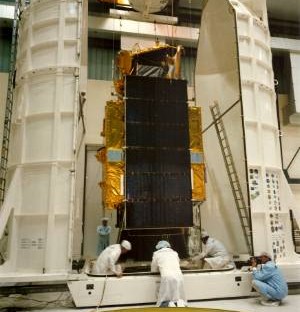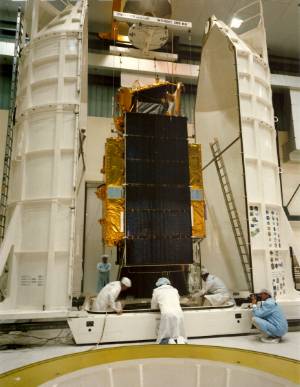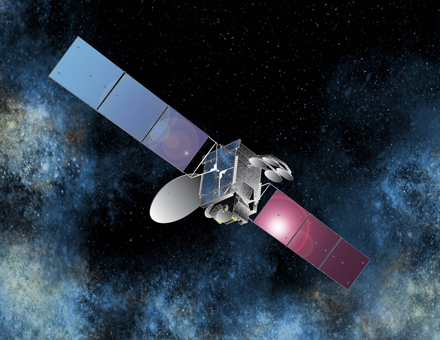
Tele-X Was Supposed to be a Scandinavian Satellite – and Scandinavia a Large Satellite Operator

Tele-X near ready for launch. Credit: NSAB/SNSB.
This year marks 25 years since the first Scandinavian communication satellite was launched. Originally, a Norwegian/Swedish project, but the cooperation project ended before the first satellite was launched.
In 1982, the governments of Sweden and Norway formed the Nordic Satellite AB (NSAB) as part of a wide-ranging partnership for the purpose of “telecommunication satellite cooperation”. The plan was to be a considerable actor within the growing communication field.
Unfortunately, the cooperation did not work, and in 1989 the two governments agreed to end their partnership and the Swedish government assumed full ownership with acquisition of Norway’s 15% share.
The cooperation was ended, but the satellite, Tele-X, was launched in April the same year, and the satellite became an instant success.
Before launch the Swedish Space Corporation (SSC) was contracted to operated the TELE-X system, but in 1993 the company acquired the Swedish government’s shares and became the sole owner.
However, in spite of a broken joint vision, the two Scandinavian countries have operated in the communication satellite market in different ways.
Sweden Out Of the Communication Market
Sweden built no more communication satellites, but late in 1993 NSAB acquired Marco Polo 1, a geostationary communications satellite, from British Sky Broadcasting. Marco Polo 1 was built for and operated by British Satellite Broadcasting. However following that company’s collapse it merged with Sky Television and formed the BSkyB. In this “merger” Sky was the dominant force and their system of transponder lease from SES’ Astra (Société Européenne des Satellites) satellites was maintained.
Marco Polo 1 (and its sister satellite Marco Polo 2) were gradually withdrawn from service.
In February 1994 Teracom acquired a 50% share of NSAB. (Teracom is a terrestrial broadcast transmission service company owned by the Swedish Government). The same month Marco Polo 1 re-entered service as Sirius 1 at 5°E. In July 1994 NSAB agreed the purchase of Sirius 2. The satellite was successfully launched on November 1997. Shortly after launch, SES signed a lease agreement for all transponders on the satellite.
In 1996, Tele Denmark acquired a 25% share in NSAB from Teracom and in May 1997 NSAB ordered a further new satellite, Sirius 3, successfully launched on October 1998.
Through several transactions through the first decade of this millennium SES (Société Européenne des Satellites) acquired more than more of NSAB, and in March 2010 SES (as then subsidiary SES Astra) took full control and in June 2010 the company was renamed SES Astra and the only fully operational satellite, Sirius 4, been renamed Astra 4A. NSAB disappeared from the communication marked, but SES is still represented in Sweden with an own office.
SES is now the world’s second largest satellite operators, with a fleet of 55 satellites in orbit and three on order, while Sweden no longer has its own satellite capacity.
Norway still within the communication market.

Thor 7 – the next satellite in Telenor’s family of satellites. Credit: Space Systems/Loral.
Without its own satellite, Norway depends on buying capacity from commercial satellite operators, not a desired situation and in July 1992 the Norwegian tele- operator, Telenor, acquired the Marcopolo 2, located at 0,8 degree W and renamed he to Thor 1. The satellite was launched in August 1990 and was switched off in January 2002, but later reactivated at 7.4 degree W, until the satellite was sent to the graveyard orbit in early 2003.
After acquiring Marcopolo 2, Telenor got its own position for a geostationary satellite at 0.8 degree W, a very valuable position for broadcasting to the wholeof Europe.
Telenor Satellite Broadcasting has since that steadily expanded, and is today ranged as the 16th place among the top fixed Satellite Service Operators with a 2013 revenue at 158.6 mill dollar, including three satellites (Thor 4, 5 and 6) in service and one in order for launch late this year (Thor 7).
Facts abut Tele-X

